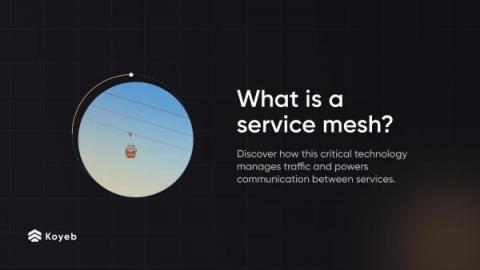Systems | Development | Analytics | API | Testing
Service Mesh
API Gateway v Service Mesh #twominuteswithkong #kong
Moderna's Nathaniel Reynolds on Service Mesh, Open Source, and AI for Developers
In this post, Nathaniel Reynolds, Associate Director of Informatics Architecture & DevOps at Moderna Therapeutics, talks about service mesh, removing limitations with open source, and how AI helps developers do more. No one can predict the future, but here’s a safe bet: in the next five to ten years, we aren’t going to have fewer applications. We’re going to have more. And that means connectivity requirements are going to get bigger and bigger over time.
Kong Mesh & Kuma 2.1 released with full suite of next-gen policies
We’re excited to announce the release of Kong Mesh and Kuma 2.1! In this release, we’re shipping the full suite of new and improved policies announced (and started) in 2.0. Additionally, we’re launching some more great UX improvements in the UI and a host of smaller fixes. In order to take advantage of the latest and greatest in service mesh, we strongly suggest upgrading to Kong Mesh 2.1. Upgrading is simple through kumactl or Helm.
The Magic of Service Mesh - What Your Sidecar Does for You
Debugging Applications in Production with Service Mesh
As an application developer, have you ever had to troubleshoot an issue that only happens in production? Bugs can occur when your application gets released into the wild, and they can be extremely difficult to debug when you cannot reproduce without production data. In this blog, I am going to show you how to safely send your production data to development applications deployed using a service mesh to help you better debug and build production proof releases.
[Tech Talk] Advanced Service Mesh - Build and Manage Multi-Cloud Applications Using Kuma
Kong Mesh and Kuma 2.0 Released with eBPF Support, Next-Gen Policies
Today we’re excited to announce the release of Kong Mesh and Kuma 2.0. With this new major release, we’re announcing the first availability of our next-generation policies, in addition to new eBPF capabilities. 2.0 is also significant as we have unified the version scheme between Kong Mesh and Kuma. Previously, Kuma versions had an n-1 version naming convention when compared with Kong Mesh.
What is a service mesh?
A service mesh is a dedicated infrastructure layer that manages traffic, also known as communication, between services in applications composed of containerized microservices. It is a critical component in a microservices architecture, responsible for the secure, fast, and reliable communication between services. This article answers a lot of the questions you may have about service meshes: What are they and how do they work? Who is using them and why?











